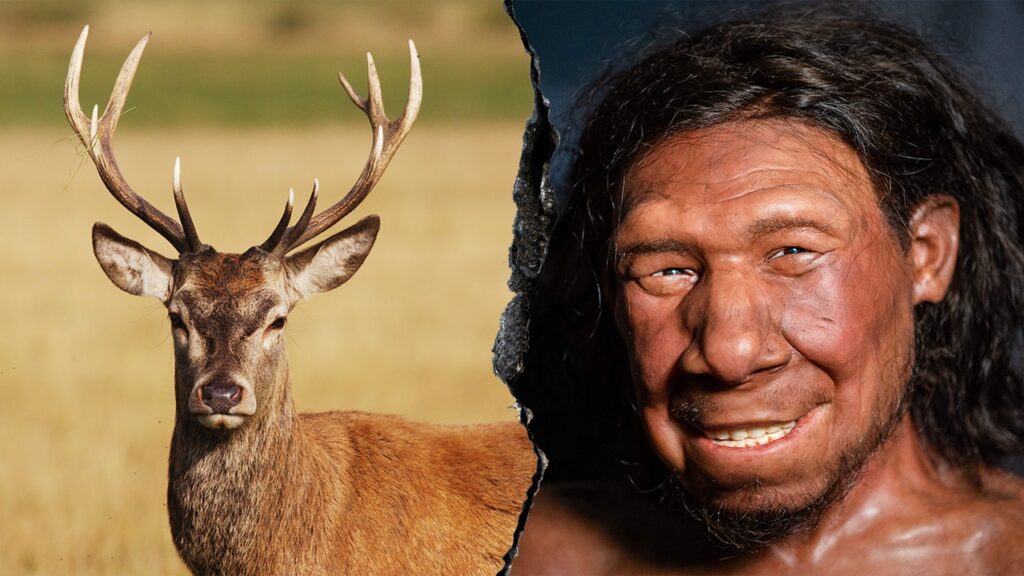In an extraordinary archaeological discovery at the Neumark-Nord site in modern-day Germany, researchers have revealed evidence that Neanderthals, who lived approximately 125,000 years ago, engaged in a sophisticated food preparation process that involved extracting and consuming fat from animal bones. This practice, termed a ‘fat factory’ by scientists, indicates a level of resource management and culinary knowledge previously not attributed to these extinct hominids.
The excavation of the Neumark-Nord site uncovered thousands of bones from a variety of large mammals, totaling at least 172 individual animals. Among these remains, researchers identified species such as red deer and horses, dating back to an interglacial period when Neanderthals roamed the landscape. The findings were published in a study on July 2 in *Science Advances*, highlighting significant advancements in our understanding of Neanderthal dietary practices.
An intriguing aspect of the excavation is the distribution of the bones. Researchers noted that while numerous bones lacking marrow were scattered throughout the site, many of the marrow-rich bones were found clustered together. These areas were termed ‘fat factories’ due to the concentrated nature of the bones within them, suggesting a deliberate and organized operation for fat extraction. Archaeologists propose that Neanderthals utilized tools to smash these bones into smaller fragments, which were then boiled for extended periods. This process allowed the fat to rise to the surface of the water, where it could be skimmed off and consumed, serving as a vital source of calories for the Neanderthal community.
Previously, the earliest evidence of such fat-rendering techniques was believed to have been established around 28,000 years ago. However, this discovery pushes that timeline back significantly, indicating that Neanderthals had developed complex strategies for managing their food resources much earlier than previously thought. Dr. Lutz Kindler, the primary author of the study, remarked on the sophisticated understanding Neanderthals had of their environment. He described how they must have planned hunts, transported animal remains, and rendered the fat in specific areas designated for that purpose. This points to a level of foresight and efficiency that is noteworthy for a species often depicted as primitive.
The significance of fat in the diet of Neanderthals cannot be understated—especially during seasons when carbohydrates were limited. The research highlighted that while their diet was primarily composed of animal protein, excessive protein consumption without adequate nutrients could lead to serious health issues, including protein poisoning. Thus, the ability to process and consume animal fat was crucial for their survival, particularly in harsh environmental conditions.
The Neumark-Nord site holds exceptional archaeological value due to the sheer volume and remarkable preservation of the bones found there. Dr. Fulco Scherjon, who works as a data manager and computer scientist on the project, emphasized that this site’s unique characteristics offer rare insights into how Neanderthals interacted with their environment, including both animal and plant life. Such findings open exciting avenues for future research, as scholars continue to piece together the lifestyles of these early humans.
Recent studies have also expanded our understanding of Neanderthal behavior beyond fat extraction. It has been discovered that they engaged in various activities such as diving for seashells, which they manipulated into sharp tools, and possibly even burying their dead with flowers—a practice indicative of cultural and possibly ritualistic behaviors.
As more findings emerge from these sites, our understanding of Neanderthals continues to evolve, challenging previous stereotypes of them as mere brutish hunters. Researchers Lutz Kindler and Wil Roebroeks did not provide immediate comments in response to inquiries, but the body of work surrounding their findings will surely spark further discussion and exploration into the lives of these fascinating ancient humans.
In conclusion, the discovery at Neumark-Nord represents a significant advancement in archaeological and anthropological scholarship, shedding light on the dietary practices and resource management skills of Neanderthals. It aligns with a growing body of evidence suggesting these ancient people exhibited behaviors once thought exclusive to modern humans, painting a more nuanced picture of Neanderthal life and culture.











